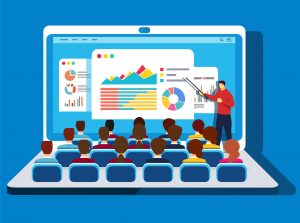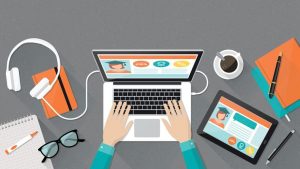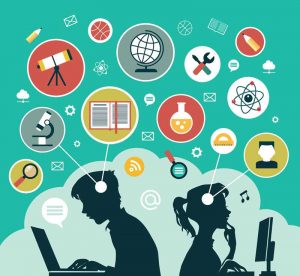With the advancements in technology, there are advancements in the teaching and learning processes as well. Teaching and learning processes have gone through a lot of changes overtime. Preferences for learning styles change over time (Dunn and Griggs, 1995). Various digital tools are used for learning, whether it is asynchronous method of learning or synchronous method of learning.
 Schools have started using smart-boards to teach courses to the students in classrooms letting the teaching software overtake and navigate through the course contents and frequently asked questions, easing the work of teachers by displaying three dimensional images or diagrams instead of the teacher drawing diagrams manually with chalks on the black boards. With this kind of technology, students can understand the content better, in an interesting way and in less time. One such software is TeachNext. The classroom teaching has seen major changes over the years, students no longer need to write down lecture notes in their notebooks, instead the professor uploads them on the university’s online portals where all the student can access the notes and other contents related to the course and students won’t have to worry a lot about missing lectures and falling behind in classes. Students can also start discussions related to the course materials or related to today’s class on those online portals without having to be physically present with others to discuss. Students can also leave messages for professor if they need extra help with the course content and can set up timing to go over the course via online video call sessions or providing more content related to the course.
Schools have started using smart-boards to teach courses to the students in classrooms letting the teaching software overtake and navigate through the course contents and frequently asked questions, easing the work of teachers by displaying three dimensional images or diagrams instead of the teacher drawing diagrams manually with chalks on the black boards. With this kind of technology, students can understand the content better, in an interesting way and in less time. One such software is TeachNext. The classroom teaching has seen major changes over the years, students no longer need to write down lecture notes in their notebooks, instead the professor uploads them on the university’s online portals where all the student can access the notes and other contents related to the course and students won’t have to worry a lot about missing lectures and falling behind in classes. Students can also start discussions related to the course materials or related to today’s class on those online portals without having to be physically present with others to discuss. Students can also leave messages for professor if they need extra help with the course content and can set up timing to go over the course via online video call sessions or providing more content related to the course.  With the evolvement of technology, new methods of learning come into existence. Many students now prefer learning from the comfort of their home instead of attending the traditional classes and there are numerous tools available for them to study online. These tools range from simple tools such as Microsoft office to google docs for working together on assignments to Udemy for online courses where students can learn various courses, set their own timings and finish the program at their own pace and repeat the content as many times as they want, and many more, such as Khan Academy which offers free courses to school and university students, w3 schools, etc. Technology also grants access to materials that were harder to find in the past (Buchwald R, 2013). With the help of search engines, information is just a few clicks away, anything can be learned online without having to attend physical classes for it. It all just requires the person to push himself and be committed to learning on their own. Many simple non-academic technical things can be learned from simple websites like YouTube where people upload educational videos in one of the many other categories.
With the evolvement of technology, new methods of learning come into existence. Many students now prefer learning from the comfort of their home instead of attending the traditional classes and there are numerous tools available for them to study online. These tools range from simple tools such as Microsoft office to google docs for working together on assignments to Udemy for online courses where students can learn various courses, set their own timings and finish the program at their own pace and repeat the content as many times as they want, and many more, such as Khan Academy which offers free courses to school and university students, w3 schools, etc. Technology also grants access to materials that were harder to find in the past (Buchwald R, 2013). With the help of search engines, information is just a few clicks away, anything can be learned online without having to attend physical classes for it. It all just requires the person to push himself and be committed to learning on their own. Many simple non-academic technical things can be learned from simple websites like YouTube where people upload educational videos in one of the many other categories.

Online testing and assessment are another very effective way for students to learn and know where they stand in terms of their course. These online assessments are programmed in such a way that they can give instant results based on the user’s input and can also provide feedback to students and tell them which area of the course they need to focus more on and provide them contents to improve themselves. They also provide hints for students to solve questions just how a teacher in class would do.
Use of digital tools has improved the overall teaching and learning experience and continues to do so. With lots of advancements and ease of accessing the course contents and learning opportunities, there are so many changes yet to witness and lots of tools yet to be developed.
References:
Dunn and Griggs (1995). All About Leaning Styles. Retrieved from
http://www.ascd.org/publications/books/196010/chapters/All-About-Learning-Styles.aspx
Buchwald, R. (2013). Using Technology to Appeal to different learning styles. Retrieved from
https://www.colorado.edu/assett/2013/05/22/using-technology-appeal-different-learning-styles

Leave a Reply